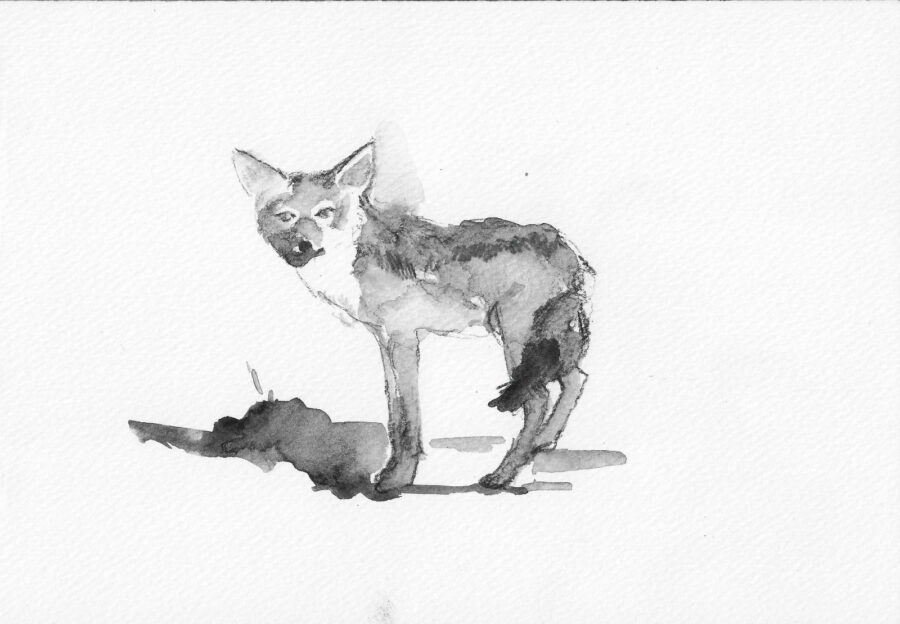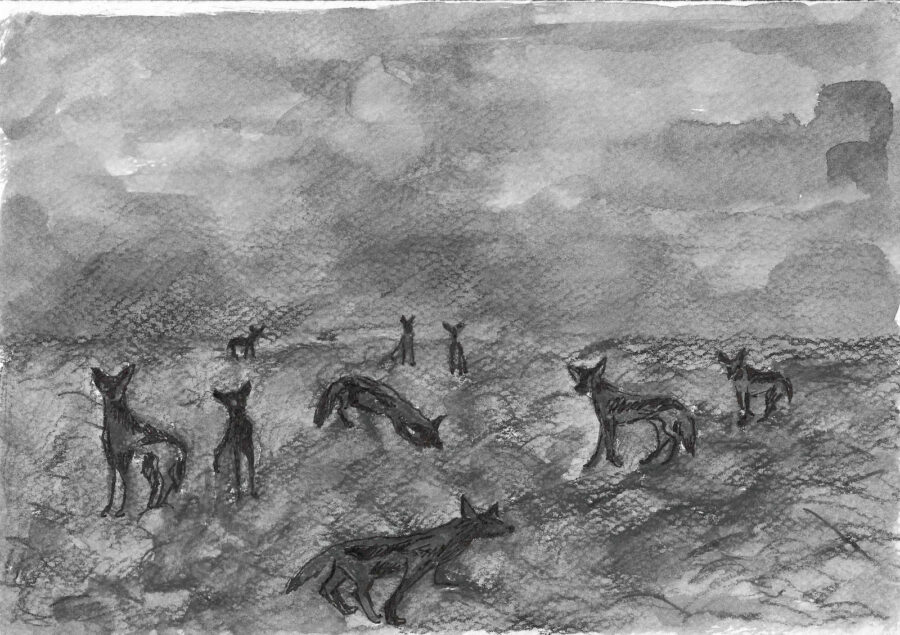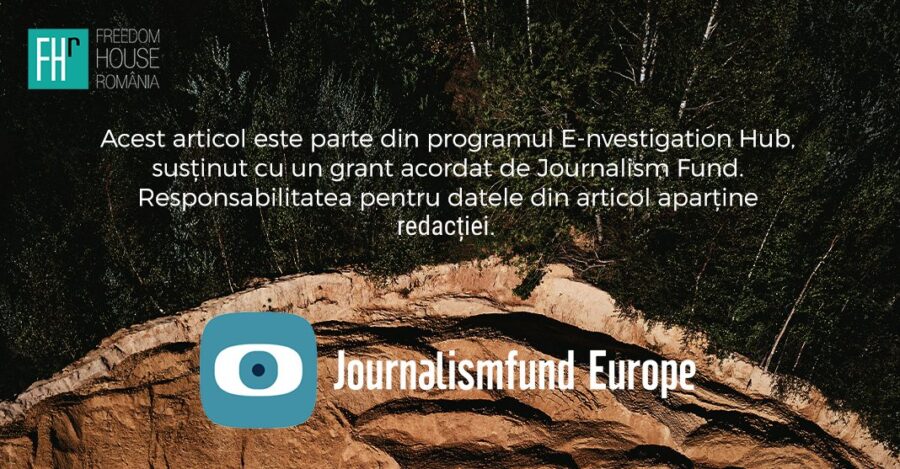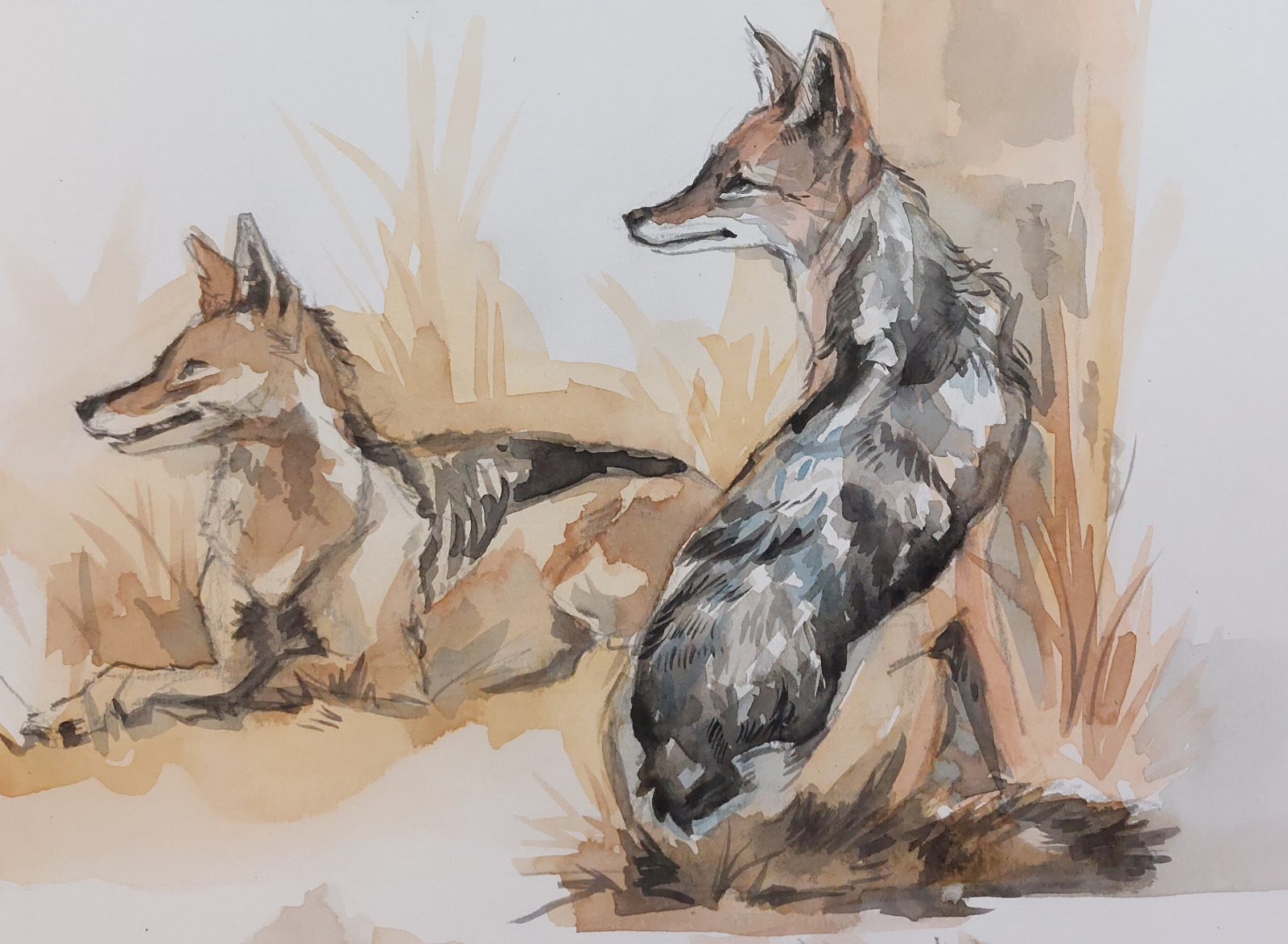After digging through 600 jackal stomachs, Serbian biologists have discovered that these animals, which are now a major nuisance in Eastern Europe and the Balkans, eat carrion, corpses, but also young rabbits, foxes and domestic animals.
The jackal, until recently a rarity in Romania, has come to terrorize villages in the south of the country, the Danube Delta and Transylvania.
In less than ten years, from a few hundred individuals, the jackal has reached 28,871 individuals in Romania in 2023, according to the Ministry of Environment.
In some problematic situations, derogations from the law have been resorted to so that the jackal can be hunted, in some cases at night.
This has happened in Dobrogea, the Danube Delta or Dolj county, after jackals have dug the dead out of graves, eaten pelican eggs or attacked sheep flocks.
Jackals are extremely adaptable because they’ll eat anything. They bred a century ago in the fields of Europe and the Balkans because they ate the dead left behind by wars.
Read also: What Mr. Beast did in Romania. The Turda Salt Mine Closed for Him
It disappeared for a while, and now they scavenge graves, scavenge rubbish, eat forest chickens, as well as corn, grapes or frogs and partridge. They devour everything.
Spotted in Vienna
„The jackal has an incredible range-expanding capacity! After not having been seen in our country for a very long time, in the space of a few years it has become uncontrollable! Most probably it came to the Danube, and in Transylvania – along the river, then along the valleys of Mures, Cris and Someș.
Recently, it was seen near Vienna. It breeds fast, is a good survivor and quickly occupies new territories. At the moment, the golden jackal is causing one of the biggest disturbances!” warns biologist Ioan Coroiu, a professor at the Babeș-Bolyai University in Cluj.
„I first saw them when I was fishing on the Danube about three years ago,” says Florin Stăiculescu, a young man who moved to the countryside in Căpreni, Gorj.
„We were fishing on a small island, where we were also staying. At night I heard some screams, I thought they sounded like cries, screeching so frightening you could be terrified.
You’d have thought it was the devil! I think devils – if they showed themselves – would do that! I asked the people there and they told me they were jackals, they crossed the Danube from Bulgaria when the water receded and froze.
They have arrived near the houses
Now they have arrived here, near our house, even though we live in the sub-Carpathian hills. They come down into the village night after night and howl and howl.
They ate the baby deer! Of the six that were in the family in the forest above our vineyard, two are left. The poor deer have come even closer to our house, staying in the vineyard for fear of jackals”.
His child, Gabriel, also has some terrible stories about jackals, which frighten his playmates: „They come to our vineyard in the evening, they are a herd! They have two rows of teeth, they eat the dead, they eat everything they can find – even the dog if they catch it! -twice a year, six young, the forest is full of them!”
Jackals are nocturnal and hard to hunt. Although not categorized as an invasive species, its characteristics may define it as such: „This animal, although not considered invasive, has invasive behavior,” explains biologist Ioan Coroiu.
„It gives birth to many offspring and most of them reach adulthood, it has an extraordinarily good capacity to adapt and survive, but also to spread, characteristics that make it invasive.”
The professor draws attention to the dangerous spread of this species: „It is seriously affecting the balance of our fauna. There are rabbits only in the hills. In Dobrogea, the jackal has almost completely wiped out the fox.
Deer are being attacked, their young are being eaten, jackals are also eating wild boar cubs. In nature, everything is connected, it’s not a question of liking or disliking an animal, but harmony is given by the existence of all these animals!”.
The jackal’s path was opened by the wolf’s elimination, explains the biologist
„The jackal has found a niche and is filling it. It has filled an ecological niche, it finds color because it is extremely adaptable.
That explains why it’s moving so quickly towards Europe, because there are no wolves there either. The downside of this species is that it is now the predator!”
The jackal is not new to Romania. Dimitrie Cantemir mentions it under the name cical, but it was rare. Now, biologists say, the jackal is dominant.
„I took my students every year to the Delta to study, and at night I wanted to show them the jackals,” says Professor Coroiu.
It’s a domino effect
„I would call them with simulated howls from my phone so they could see them. They didn’t believe they existed. Once, a student said to me: come on, professor, the jackal lives in Africa, not in the Danube Delta! And when hundreds of red eyes appeared from the reeds, my students were amazed!”
„What happened with the jackals is a lesson,” concludes the professor.
„If we don’t devise strategies to control the numbers of this species, we are losing a huge amount of our traditional fauna.
And it’s not that we are more sensitive conservationists, it’s that everything in nature has a purpose, and the slightest imbalance causes enormous long-term damage.
It’s the domino effect that the jackal has triggered in the balance of our fauna. Of course it’s hard to strategize, but it has to be done!”
Asked how the phenomenon could be brought under control, the professor says that hunting would be one of the palliatives that could keep the number of species below a level at which it would not damage the balance.
But first of all, says the biologist, the legal status of this animal should be changed, because it is now protected like the black goat. The jackal has multiplied so quickly that the law has not adapted to the new reality.
„The Danube delta is teeming with jackals, as are the Olt and Ji delta, where wildlife is in great danger! And the locals are desperate,” he adds.
28,871 jackals in Romania
In 2023, according to official statistics provided by the environment ministry, the total number of jackals in Romania was 28,871.
Since 2006 (when 1,871 specimens were reported), the numbers have increased almost exponentially. The highest densities are found in the counties of Tulcea, Dolj, Constanța, Vaslui, Călăraș, Olt and Buzău.
Cristian Papp, environmental activist at WWF Romania, believes that the situation should be monitored at national level by representatives of hunting associations.
In reality, in the reply we received from the General Association of Hunters and Fishermen (AGVSP), we were told that „AGVPS in Romania does not manage hunting funds.
In order to obtain the information you require, we recommend that you contact the Ministry of Waters and Forests, the administrator of the national game reserve and the manager of the game reserve you are interested in”.
Unfortunately, we have to deal with passing the responsability, because some of the reports on Romanian wildlife herds on the Ministry of the Environment’s website come from hunting associations.
„Reports are made on your knees, as the hunters want”.
„No one from the Ministry of the Environment ever comes, each hunting fund makes its own assessments! If hunters are interested in shooting more bears, they report bears. If they don’t feel like shooting jackals, they report fewer jackals! Nobody cares about reality!”
„Almost no wildlife assessment in Romania is accurate!” warns Mihai Negru, a professional hunter and game owner.
But there are various environmental NGOs in some parts of the country, including the Danube Delta, which are concerned about wildlife.
In some counties (Hunedoara, Cluj, Sălaj), the first to identify the presence of jackals were environmental NGOs, following monitoring by various methods such as bioacoustic stimulation, installation of cameras with motion sensors, direct observation.
Death of deer and jackals
Mirela Cruceru lives in a house on the edge of the forest. Jackals have eaten both her dog and her cat. „I found the cat’s head on the path near the house. I never found the dog.

The forest is full of jackals. Our family has lived here for hundreds of years, but we’ve never had anything like this in our forests before.
They come in packs every night, come down to drink water from the brook and catch pets. In the evening I lock everything up and go upstairs to sleep, because I see them prowling around, there are a lot of them and I’m scared of them.”
Although there have been no reports of attacks on humans, jackals frighten people because of the strange sounds they make and because they are ugly-looking predators.
„I’ve heard that they ate a neighbor’s ducks, household chickens, ate my aunt’s cat and chained a dog somewhere in Vladimir. In our garden, last spring, two deer took shelter, they were going to give birth.
This has never happened before, they were frightened animals, they ran away when they met a man, now they come to him to protect them from jackals! You wouldn’t believe it,” says Mihaela, a local from Totea, a village south of the Carpathians.
„Last fall, when I was out plowing with the tractor, I was late in the field. It was getting dark and when I looked around, I was surrounded by a pack of red-eyed hawks.
There were dozens of jackals, the field was full around me. They were eating the mice pulled out of the ground by the plow”, says Florin Stăiculescu.
An important observation is made by researchers at the University of Agricultural Sciences in Cluj.
„In the last 10 years, the problem of wild rabbit herds has become increasingly visible. Basically, there are large geographical areas in which wild rabbit herds are almost non-existent.
If 25-30 years ago we used to see over a hundred rabbits in a 200-hectare circle, now it happens that not a single one jumps,” they say.
Professor Călin Gherman has been sounding the alarm since 2022, when he began a study into the causes of the worrying decline in the species’ numbers, including the increasing presence of jackals.
The Danube Delta is also severely affected by jackal breeding
„I have a friend who lives in the Delta and raises cows. One spring when calving his cows, jackals ate 50 calves.
If they do that kind of damage to farm animals, imagine what happens to wild animals! Rabbits are almost extinct in the Delta,” says Mihai Negru, a hunter and sport fisherman.
This species, the wild rabbit, says the hunter, has also almost disappeared from the game he manages. And the jackal has also „invaded” these areas.
„They have bred terribly. They’re everywhere. Even in my hunting grounds in the Sinaia and Hațeg area, there are a lot of them.”
One cause of the animal’s expansion, explains Negru, is that jackals are hard to hunt. „You go hunting a jackal for two to three weeks, because skillfully, it hides. Time consuming and with minimal results, that’s why it’s not favored by hunters!”.

Defense
One of the most important reasons why the species has multiplied so much here seems to be that fewer pesticides are used and therefore there are more rodents, which are good food for the jackal. Even preferred.
Ecologists consider them beneficial in this respect. „In agricultural areas, the food of jackals is overwhelmingly (up to 80%) rodents.
Add to that the fact that they neutralize swine or avian flu viruses by consuming wild boar or wild bird carcasses, and jackals can be of help.
This is one of the reasons why, surprisingly to many, the golden jackal (Canis aureus) is listed in Annex V of the Habitats Directive, along with the black goat (and not only).
Put simply, the golden jackal and the black goat have the same protection status at EU level.
In their case, it is mandatory to study the herds and monitor them before taking any management measures, such as, in the case of jackals in Romania, hunting quotas of over 80%”, explains Ovidiu Banea, ecologist-biologist at Crispus NGO Sibiu Romania, in a podcast dedicated to the jackal issue.
„And yes, jackals also hunt rabbits, calves and poultry. But a household surrounded by a fence and guarded by dogs is much less tempting to jackals. Of course, there’s also the fact that dead domestic animals are often dumped in fields instead of being cremated or at least buried,” he says.
But locals believe that it is not garbage or dead animals that have brought the jackals: there are fewer and fewer livestock keepers in the villages, so the situation of their carcasses in recent years would not be likely to attract jackals.
„What rubbish or animal carcasses are we talking about in our village, when there are no sheep and not even a single cow?!
The jackal is not an invasive species
If they were coming for food, they were coming a long time ago, when we actually had food! If cats and ducks eat people’s cats and ducks, it means they have nothing to eat in the fields or out of the garbage!” thinks Mirela from Totea.
„In general, the species is given an extremely negative image, sometimes even demonized. There are certain myths about the jackal, such as: it is an allochthonous species, it is an invasive species, or: the number of jackals is too high in the area, based on the howls heard.
However, the jackal is neither an allochthonous nor an invasive species, as the species was not introduced by man, but gradually colonized the Black Sea and Mediterranean coasts before the 20th century, after which it spread to other parts of Europe,” explains Cristian Papp, environmental activist at WWF Romania.
„Today, the jackal is considered to have the most spectacular expansion of all mammalian species in Europe, which is favored by changes in land use (more and more abandoned land is becoming ideal habitats for the species), the disappearance of the wolf from several areas, urban expansion (which comes with the availability of anthropogenic food), and climate change,” Papp adds.
Cristian Papp points out that the jackal can be seen both as a beneficial species, through its role in ecosystem health and its massive consumption of rodents, and as a problematic one.
„Solutions exist,” he says
„First of all, in order not to attract jackals near settlements, the problem of waste, especially organic waste, should be solved. Secondly, domestic animals should be kept enclosed in the yard or guarded (preventive means such as electric fences or specialized dogs can also be used).
„Thirdly, there should be better awareness and information in communities facing nuisance caused by the presence of jackals,” says Papp.
„Fourthly, if the above recommendations were implemented, the number of jackals could be managed much more easily by the staff of associations managing game reserves,” the ecologist adds.
Jackal hunting
„Jackals are wreaking havoc!” declared Sorin Birceanu, head of the County Association of Hunters and Sport Fishermen (AJVPS) in Gorj.
„We know and have been signaling the problem. They have destroyed the rabbit and deer populations, they attack the young. It’s just that hunting them is difficult: during the day they hide in burrows and hollows, you can’t find them. A derogation should be granted and we should be allowed to hunt them at night,” says Birceanu.
Annual wildlife assessments in Romania do not provide relevant information on the evolution of species numbers. If one year there are reports from some game reserves, the following year there are reports from other reserves, or the number of reports differs.
However, an example for comparison shows that in Gorj County, the rabbit population has steadily decreased from 10,326 rabbits in 2020 to 10,119 in 2021 and 9,667 in 2022.
The 2023 rabbit population assessments for Gorj only include data from three game funds and total only 2,559 rabbits.
The concern of the director of AVPS Gorj is the extinction of some species, primarily rabbits: „In my opinion, the jackal is an invasive species. Faced several times a year, it multiplies exponentially.
Every spring, we make an assessment of their numbers and send it to Bucharest, after which the hunting quotas are set. But as long as the hunting is hard and the hunters are not motivated – the jackal can’t be eaten and the reward is just a few cartridges – we fail to do what we should do.”
„There was talk of changing the law,” Birceanu recalls. „We’ve seen a legislative proposal to allow us to hunt at night with sighting systems, but it’s not enforceable yet. Until then, they’re multiplying, the animals in the forest are dwindling, and it’s going to get harder and harder to deal with.
The wild rabbit population has crashed! The same with foxes. Now they eat wild boar and deer cubs”, warns the director of AVPS Gorj.
The Ministry of the Environment gave us a general answer
The Ministry of the Environment gave us a general answer, more related to the standard methodology than to the concrete management of this species: „Hunting of jackal species is carried out according to the Order of the Minister of Agriculture and Rural Development No 353/2008 approving the Regulation on the authorization, organization and practice of hunting by the „stalking”, „burrowing”, „nesting”, „drawing” and „hunting on the run” methods throughout the year.”
And „hunting authorizations are issued by the technical management of the managers, on the hunting grounds under their management, within the limits of the approved harvest quotas, depending on the situation on the ground, on the basis of reports received from citizens or of concentrations in certain areas observed by field staff.”
As for the alarming problem of jackals multiplying, the ministry also points out that „the only legal method to reduce this population is hunting, and to reduce the damage caused by this species, citizens can report and request support from the managers of hunting grounds”.
Costel Secelean, a forester in Gorj county, describes the situation as follows: „There are hundreds of jackals in our forests. They attack any animal, even birds! The hunting has gone to hell! They eat everything they catch, birds, rabbits, wild boar, deer!”
„The hunters don’t care, it’s hard and it’s not worth it!” he adds.
Selecean is also among those in favor of night hunting, which he justifies: „Jackals burrow in, they only come out at night! They should be given better hunting conditions, otherwise I don’t know where we’ll end up!”
In a few cases, derogations to the law were granted and jackals could also be hunted in the Danube Delta, Dobrogea and Dolj county, after jackals have dug up dead bodies from graves, eaten pelican eggs or attacked sheep flocks.
The data provided by the Ministry for the Environment (see table) shows that those approved harvest quotas are not realized in any given year.
| No. | Species | Hunting season | Total population | Approved hunting quotas | Fulfilled hunting quotas |
| 1 | 2017-2018 | 12506 | 8298 | 5893 | |
| 2 | 2018-2019 | 14273 | 10364 | 8448 | |
| 3 | Jackals | 2019-2020 | 10557 | 12841 | 9497 |
| 4 | 2020-2021 | 17568 | 14703 | 9899 | |
| 5 | 2021-2022 | 19356 | 16871 | 11292 | |
| 6 | 2022-2023 | 23042 | 19898 | 13155 | |
| 7 | 2023-2024 | 28871 | 24666 |
Head-to-head laws on jackals
The possibility of practicing night hunting of jackal is regulated by the Order of the Minister of Agriculture and Rural Development No. 353/2008, as amended, with the possibility of practicing by „stalking” and „nade” methods.
In March 2023, a bill initiated by the Federation of Hunters’ Associations was tabled aimed at legalizing the use of hunting weapons with night sights for shooting pest species – wild boar, foxes and jackals.
The proposal specified that these „night vision” devices could be used only by employees of authorized hunting funds.
The intention of this legislative proposal was to allow the night shooting of laser-based sights under certain conditions.
Environmental activists reacted to the tabling of the bill by arguing that hunting of this type also carries the risk that at a greater distance the species may not be exactly distinguishable.
„Instead of shooting a hound or a jackal, because we have seen that the jackal is also the target of this change, you could shoot a wolf,” said Cristian Papp.
At the same time, Ciprian Gălușcă, coordinator of Greenpeace Romania, believes that „as long as there is very good control of these devices so that they do not end up in the wrong hands, so that they are not used for poaching, they can bring safety in terms of night hunting.”
Within a year of the bill’s introduction, allowing night hunting came under the umbrella of another law: Law 122/2023 on pig farms and the control of African Swine Fever in Romania, Paragraph (2) of Article 12.9. which allows night hunting of some species, including jackal.
Thus, the law specifies in Art. 12, para. 2: „By way of derogation from Law no. 407/2006, as subsequently amended and supplemented, for the species involved in the transmission of African swine fever, namely wild boar, jackal and fox, hunting is also permitted with the devices provided for in Article 39 para. (1) letter ad) of Law no. 407/2006, with subsequent amendments and additions.”
Several environmental organizations have appealed to the Romanian President to remove this article from the law and not to promulgate the text in the form adopted by the Senate, arguing that the reduced visibility at a distance may affect other protected species.
Jackals bring no money and are hard to shoot
In practice, night hunting with night vision systems is not possible.
„In principle, the hunting law is good, but impossible to apply!” says Mihai Negru, a professional hunter.
„The text of this law is at odds with the law on arms and ammunition,” explains Bogdan Dragomir, director of the Alba County Association of Hunters and Sport Fishermen.
Theoretically, hunting at night is allowed, but in practice, under the firearms law, hunters are not allowed to hunt with illuminated sighting systems attached to their rifles.
„We could hunt jackal at night, but in fact we can’t, because you can’t hunt in the dark!” says Bogdan Dragomir, AJVPS Alba representative.
Mihai Negru also explains how the law allows the use of the light devices but you are not allowed to apply them on the gun: „Although these devices are sold in any specialized shop in Romania, it is illegal to use them when shooting. You hold them in your hand and look with them, but that doesn’t help.
It’s practically impossible to hunt at night under the law. It is a Romanian ineptitude: you are allowed to have night devices, but you are not allowed to use them!”
However, jackals, like most of our animals, are nocturnal. He says that in other countries hunting for pest species can be done using these night-sighting devices legally.
„In Germany and other countries in Europe, it is allowed. Germans are fighting wild boar in the Berlin area and they are allowed to use these devices on their guns.”
Who keeps watch in the jackal field
The serious situation, the imbalance created by the exponential growth of jackal populations, is blamed on the lack of action by state authorities.
„The state has not taken measures, has not monitored the situation on the ground and has not imposed rules to regulate the ecosystem. The ambiguity of the reports and the lack of controls has left room for the disaster that we are now seeing,” says Mihai Negru.
Bogdan Dragomir, director of the AJVPS, says that there are also a lot of jackals in Alba county, in the areas covered by his association.
„Since 2009, when we shot the first jackal, and until now they have multiplied exponentially, there are very, very many of them in our area too. I don’t hunt at night, I can’t see in the dark. We strive to achieve the quotas, but not everywhere is successful.”
Cristian Papp, representing WWF Romania, also suspects false achievements of hunting quotas. „It’s also possible that hunters report more animals hunted than they actually do, precisely to avoid penalties, which explains the widespread breeding.”
On the ground, game managers, hunters’ associations and the environment ministry are still in a state of procedural confusion: no one knows who should report a problem linked to the imbalance caused by jackals. And who should solve it.
Follow PressHUB on Google News!





